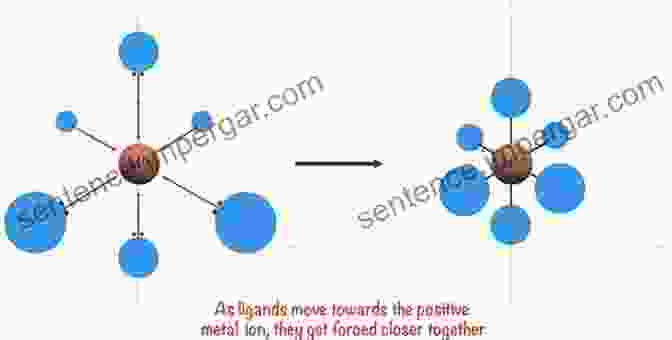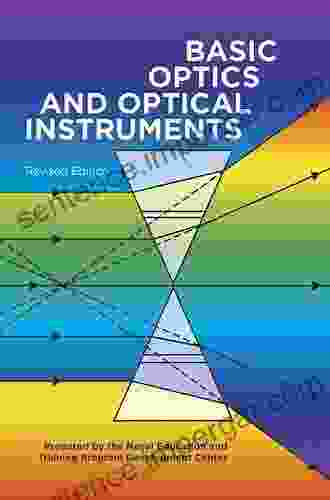Inverse Coordination Chemistry: A Paradigm Shift in Chemical Concepts

Challenging the Norm: The Inverse Coordination Paradigm
In the realm of chemistry, the concept of coordination chemistry reigns supreme, describing the interactions between metal ions and ligands. However, a groundbreaking new concept has emerged, challenging these long-held notions: Inverse Coordination Chemistry.
5 out of 5
| Language | : | English |
| File size | : | 7205 KB |
| Text-to-Speech | : | Enabled |
| Screen Reader | : | Supported |
| Enhanced typesetting | : | Enabled |
| Print length | : | 184 pages |
Inverse Coordination Chemistry inverts the traditional coordination chemistry perspective, positing that ligands can coordinate to metal atoms via their electrons, rather than through their nuclei.

Catalysis Redefined: Inverse Coordination in Catalytic Processes
The implications of Inverse Coordination Chemistry extend far beyond theoretical concepts, with profound applications in catalysis, the field of accelerating chemical reactions.
Traditional catalysts rely on metal ions to activate reactants, but Inverse Coordination Chemistry introduces a novel approach. By utilizing electron-rich ligands, catalysts can be designed to selectively activate specific substrates, enhancing both efficiency and selectivity in catalytic processes.
This paradigm shift opens up new possibilities for designing highly efficient and environmentally friendly catalytic systems, revolutionizing industries from pharmaceuticals to energy production.
Materials Science Revolutionized: Tailoring Properties with Inverse Coordination
Inverse Coordination Chemistry's transformative power also extends into materials science. By controlling the coordination of ligands via their electrons, scientists can tailor the properties of materials with unprecedented precision.
This innovative approach enables the creation of materials with enhanced electrical conductivity, magnetic properties, and optical properties. The potential applications are vast, ranging from advanced electronic devices to novel functional materials for energy storage and conversion.
Bridging Disciplines: Inverse Coordination in Drug Design and Beyond
The impact of Inverse Coordination Chemistry extends beyond chemistry, bridging into other scientific disciplines.
In drug design, for instance, the ability to target specific proteins with electron-rich ligands offers new strategies for developing more effective and targeted therapies. Similarly, in biochemistry, Inverse Coordination Chemistry provides insights into the complex interactions between proteins and their ligands, shedding light on fundamental biological processes.
Beyond traditional scientific boundaries, Inverse Coordination Chemistry finds applications in diverse fields such as electrochemistry, energy storage, and environmental remediation. Its versatility and transformative nature position it as a driving force for innovation across the scientific spectrum.
: Embracing the Inverse Coordination Revolution
Inverse Coordination Chemistry is not simply a reinterpretation of established concepts, but a paradigm shift that challenges the very foundations of chemical bonding and coordination chemistry.
With its transformative implications in catalysis, materials science, drug design, and beyond, Inverse Coordination Chemistry is poised to revolutionize the way we approach chemical synthesis, material design, and drug development.
As research in this exciting field continues to accelerate, we can anticipate even more groundbreaking discoveries and applications, ushering in a new era of scientific innovation and technological advancements.
5 out of 5
| Language | : | English |
| File size | : | 7205 KB |
| Text-to-Speech | : | Enabled |
| Screen Reader | : | Supported |
| Enhanced typesetting | : | Enabled |
| Print length | : | 184 pages |
Do you want to contribute by writing guest posts on this blog?
Please contact us and send us a resume of previous articles that you have written.
 Book
Book Novel
Novel Page
Page Chapter
Chapter Text
Text Story
Story Genre
Genre Reader
Reader Library
Library Paperback
Paperback E-book
E-book Magazine
Magazine Newspaper
Newspaper Paragraph
Paragraph Sentence
Sentence Bookmark
Bookmark Shelf
Shelf Glossary
Glossary Bibliography
Bibliography Foreword
Foreword Preface
Preface Synopsis
Synopsis Annotation
Annotation Footnote
Footnote Manuscript
Manuscript Scroll
Scroll Codex
Codex Tome
Tome Bestseller
Bestseller Classics
Classics Library card
Library card Narrative
Narrative Biography
Biography Autobiography
Autobiography Memoir
Memoir Reference
Reference Encyclopedia
Encyclopedia James T Lamiell
James T Lamiell James B Stewart
James B Stewart Janet Leary
Janet Leary Jamie Bisson
Jamie Bisson James Walsh
James Walsh Jeff A Johnson
Jeff A Johnson James M Dennis
James M Dennis James Downey
James Downey Jason Lindamood
Jason Lindamood James Hockings
James Hockings Jane Eastoe
Jane Eastoe James B Kaler
James B Kaler James J Licari
James J Licari Jane Lazarre
Jane Lazarre Japanmanagementassociation
Japanmanagementassociation James Kotsiras
James Kotsiras James A Harris
James A Harris Jason Ryan
Jason Ryan Jane Lark
Jane Lark James E Zull
James E Zull
Light bulbAdvertise smarter! Our strategic ad space ensures maximum exposure. Reserve your spot today!

 Hank MitchellBecome a Legal Maverick: Unleashing the Power of In-House Employment Counsel
Hank MitchellBecome a Legal Maverick: Unleashing the Power of In-House Employment Counsel
 Richard WrightHarnessing Nature's Energy: A Comprehensive Review of "The Passive Solar...
Richard WrightHarnessing Nature's Energy: A Comprehensive Review of "The Passive Solar...
 Julio Ramón RibeyroDiscover the Enchanting Angkor Ruins: Cambodia's World Heritage Treasure
Julio Ramón RibeyroDiscover the Enchanting Angkor Ruins: Cambodia's World Heritage Treasure
 Elmer PowellUnlocking the Secrets of Light: A Comprehensive Exploration of Basic Optics...
Elmer PowellUnlocking the Secrets of Light: A Comprehensive Exploration of Basic Optics...
 Billy PetersonGuide to Making Money Managing Your Intellectual Property: Understanding The...
Billy PetersonGuide to Making Money Managing Your Intellectual Property: Understanding The... Richard AdamsFollow ·13.6k
Richard AdamsFollow ·13.6k Dalton FosterFollow ·14.1k
Dalton FosterFollow ·14.1k Cruz SimmonsFollow ·16.2k
Cruz SimmonsFollow ·16.2k Albert CamusFollow ·4.7k
Albert CamusFollow ·4.7k José SaramagoFollow ·19.9k
José SaramagoFollow ·19.9k Arthur C. ClarkeFollow ·7.6k
Arthur C. ClarkeFollow ·7.6k Dylan MitchellFollow ·6.8k
Dylan MitchellFollow ·6.8k Leon FosterFollow ·4.6k
Leon FosterFollow ·4.6k

 Jacob Foster
Jacob FosterPrinciples and Persons: The Legacy of Derek Parfit
Derek Parfit's 1984 book,...

 Leo Mitchell
Leo MitchellPartners For Life: Raise Support For Your Missionary Work...
Are you a missionary or ministry leader...

 Blake Kennedy
Blake KennedyOn Desperate Ground: A Gripping Account of World War II's...
Hampton Sides' "On...

 Duane Kelly
Duane KellyCriminal Minds Sociopaths Serial Killers And Other...
In the realm of criminology,...

 Craig Blair
Craig BlairHome Repair: The Ultimate Guide to Fix, Maintain, and...
Welcome to the...

 Elmer Powell
Elmer PowellThe Organic Grower Guide to Mycorrhizae Science for...
Unlock the Secrets of Soil...
5 out of 5
| Language | : | English |
| File size | : | 7205 KB |
| Text-to-Speech | : | Enabled |
| Screen Reader | : | Supported |
| Enhanced typesetting | : | Enabled |
| Print length | : | 184 pages |


